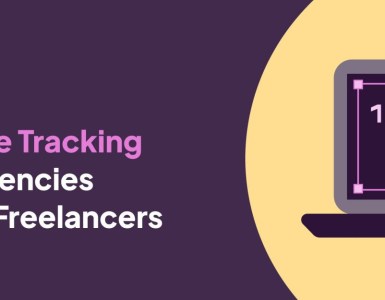Finding a freelancer that’s trustworthy and reputable can be a daunting and complicated process. It can be difficult to collect references because they hop from client to client on short term contracts.
Hiring an in house employee can seem so much simpler by comparison. There are various channels you can go to to check a potential employee’s credibility. Firstly, there’s their CV. If you want you can initially interview them via telephone. Then you can conduct a face-to-face interview. Then if it’s necessary you can interview them a second time. Lastly, you can contact their previous place of work for a reference. So there are lots of safety nets to fall back on. Lots of chances to get it right. But often these rules don’t apply to freelancers.

You may be hiring a freelancer or a contractor for a short amount of time. You might even only be hiring them for one small project. To go through 5 rounds of interviewing when you’re only hiring for the short term seems excessive. So, how do you do less checking, without hiring a dud?
Freelancers tend to work on short term projects for many different clients. So, it may not be as simple as asking to see a copy of their CV. A lot of freelancers don’t keep traditional CVs to hand out to new clients. So, how do you go about collecting references from them?

The simple answer to this question is this. You should ask your freelancer who they last worked for, and get a reference from them. Just like with a ‘traditional’ in-house employee. You can either call, write or email. But this might not always be possible. For example, if your freelancer’s last client was in a different country and doesn’t speak your language.
But, you might need more assurance than that. Like, if the last project your freelancer completed only took them a couple of hours. You might need more of a guarantee they’ll be a good person for you to work with. And, it’s always a good idea to actually see some of their previous work
There are no hard and fast processes when it comes to getting references from freelancers. Some people will conduct rounds of interviews just like with an in-house employee. Others will be happy to hire someone simply on the recommendation of a friend. It’s up to you to work out a comfortable middle-ground.
Portfolios:
Most importantly, all freelancers have a portfolio of work they’ve completed for previous clients. You can look through this work and decide whether they have the skills to do what you need. Some portfolios will be digital, some will be paper, depending on the type of freelancer.
Recommended by a friend:
Word of mouth recommendations can often be the best references. If someone you trust has previously hired that freelancer, and is singing their praises, then you’ve got the green light to hire. But, don’t take all recommendations at face value. If your Mum’s friend’s daughter at the salon who you’ve never met is giving you a recommendation, it’s best to double check that before you hire.
Interviews:
Treat freelancers like you would an employee and give them an interview. It doesn’t need to be a formal, sit down interview. You might not have time for that. You should at least make time to talk through your project with your freelancer. Even if it’s just a casual chat. You’ll be able to address any doubts you have. Ask them why they’re the best person for the job and what skills they have.

If you’re hiring someone from the other side of the globe, this could be difficult. But there are ways around it. Skype is great for video calling. You just have to work out a time that’s suitable for both of you if you’re in different timezones.
References:
Get a client history from your freelancer. It might be obvious from their portfolio who they’ve worked for. But, if not, ask them to tell you who they’ve been working for most recently. Then, with their permission, you can contact those clients for a reference.
It’s important to ask permission from your freelancer if you want to contact their previous clients for references. Don’t charge ahead and do this without their say so. It’s a bad faux pas to do this, and could result in a very angry freelancer.
Testimonials:
Sometimes freelancers save you the bother of contacting their previous clients. It’s common for some freelancers to have a testimonials section on their website. There you’ll be able to read references from people they’ve worked with.
Testing:
The freelancer’s portfolio should be enough for you to judge their skills. If you’re you’re still not sure whether they’re suitable, it could be that they’re not. But, if you’re still fixed on hiring that particular freelancer, you could set them a test. Usually this will be a small piece of work, similar to the kind of project that you want completed.
Testing is a touchy subject. Firstly, it’s easy to cheat if your freelancer is remote. Secondly, testing is a step away from asking them for sample work. Which, if you’ve read our article on sample work, you’ll know is generally frowned upon.
Social media and blogs:

A good way to judge the character of your freelancer is to check out their social media accounts. Many freelancers have professional social media accounts on Twitter, Facebook and Instagram. They use social media to post snippets of their work, industry-related content and connect with peers and clients. This should give you a good idea of how they interact with different people. Lots of freelancers keep a blog these days too, which shows a passion for their craft.
Freelance site ratings:

If you’re hiring someone through one of the many freelancer sites out there, you’re in luck. They make it easy to get references. You can automatically see who they’ve been working with, and see a rating that person gave them.



